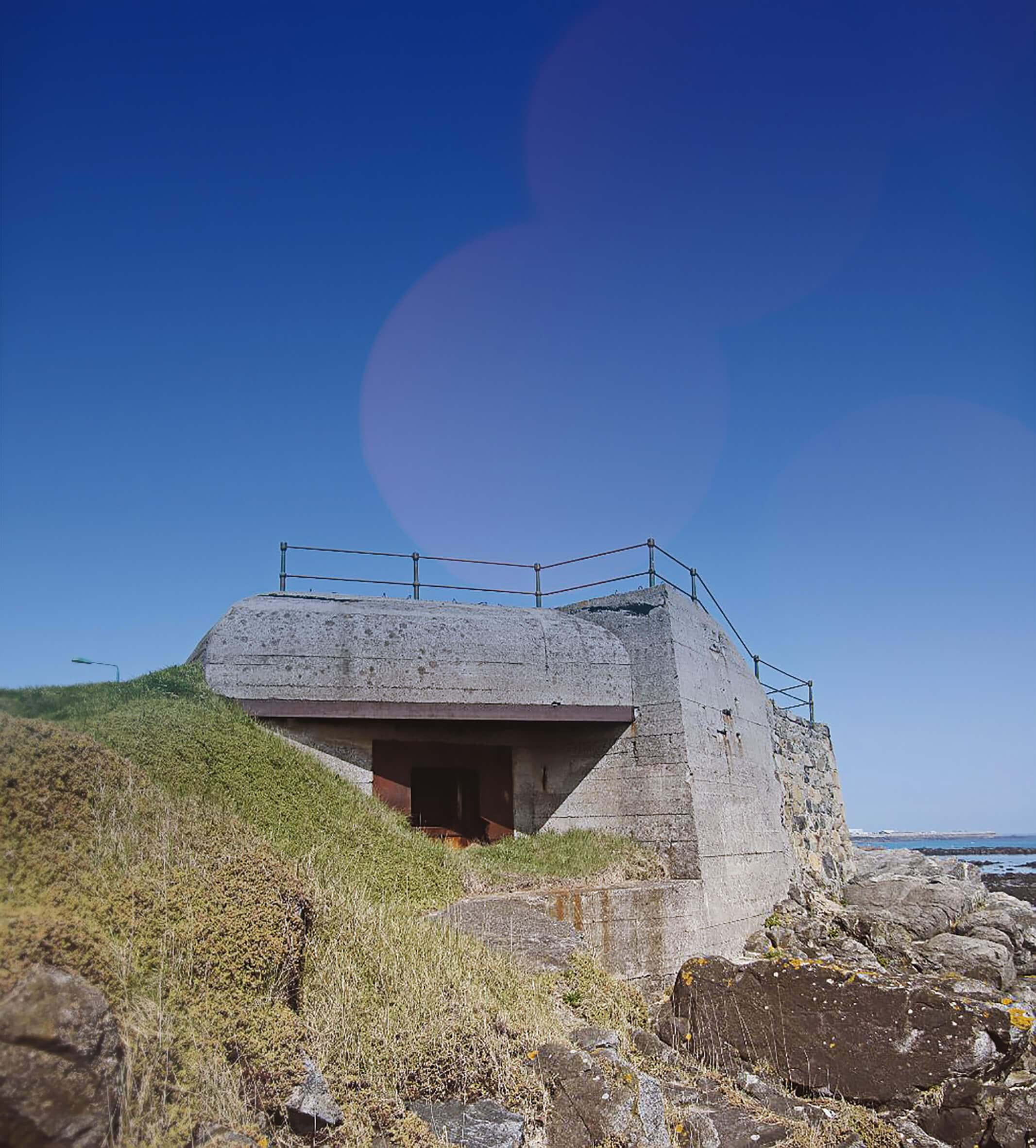
Ferries
Ferry & Hotel

- Ferries
- Ferry & Hotel
- Day Trips
- Travel Guides
- Onboard
- Help & Info
Ferries
Ferry & Hotel

At the beginning of World War II, the German soldiers found the fortifications already on the islands to be inadequate for their own warfare and Hitler ordered the construction of over 200 new buildings for both Jersey and Guernsey.
Guernsey, although the smallest of the two, was given special treatment and had 12,000 troops inland, that’s one German soldier for every two civilians. As a result of this, the island is flooded with German bunkers and fortifications which can now be explored by members of the public.
German Underground Hospital
The Underground Hospital is the largest construction in the Channel Islands at 7000 square meters, made by slave workers who were captured by the Germans. It was built underground so it would be hidden from overhead planes as it also was used to store valuable ammunition. The hospital is now open to the public and gives a ghostly insight into life on the island at the time.
Guernsey Aquarium
Construction of this tunnel originally began in the 1800s and was further developed during the occupation by the Organisation Todt, a Third Reich civil and military engineering group who added on a number of storage galleries for use as a temporary auxiliary munitions store. In 1967, the Guernsey Aquarium moved in and transformed it into the specialist local water and fish sanctuary aquarium it is today.
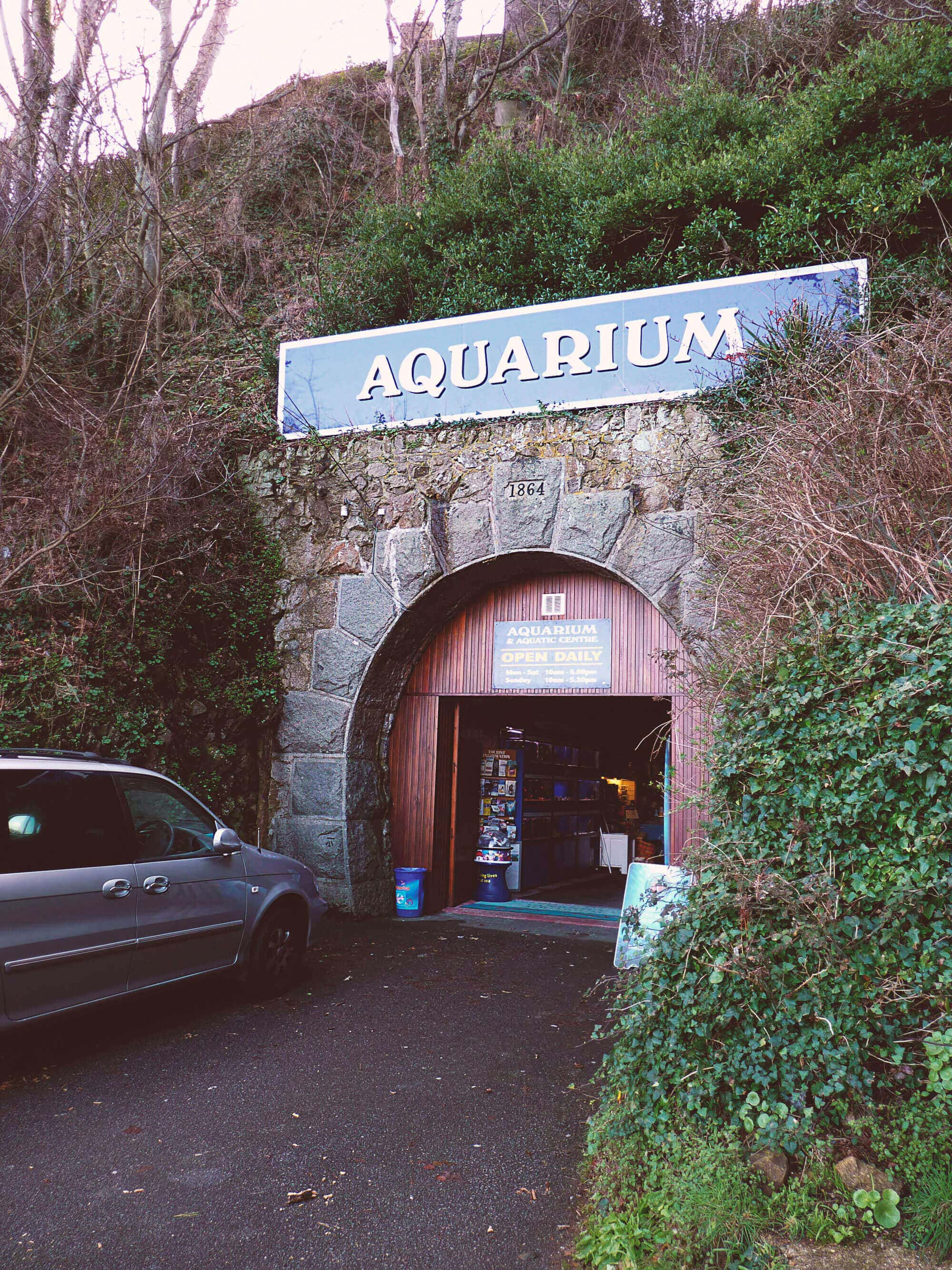

Guernsey Bunkers
Bird Hide
The Bird Hide is a former army artillery observation post that was used to relay information back to the coastal gun batteries on target. Today, it is now the perfect location for watching the varied species of birdlife off the Guernsey coastline.
Hot Source Audio Production Bunker
The studios of Source, a team of composer/musicians who specialise in music and sound production for TV, film and radio was once a Type M172 bunker. Based in St Peter Port, this former home to the headquarters of the Naval Commander Channel Islands – SEEKO-KI, was the control centre for all wartime naval operations in the Channel Islands.
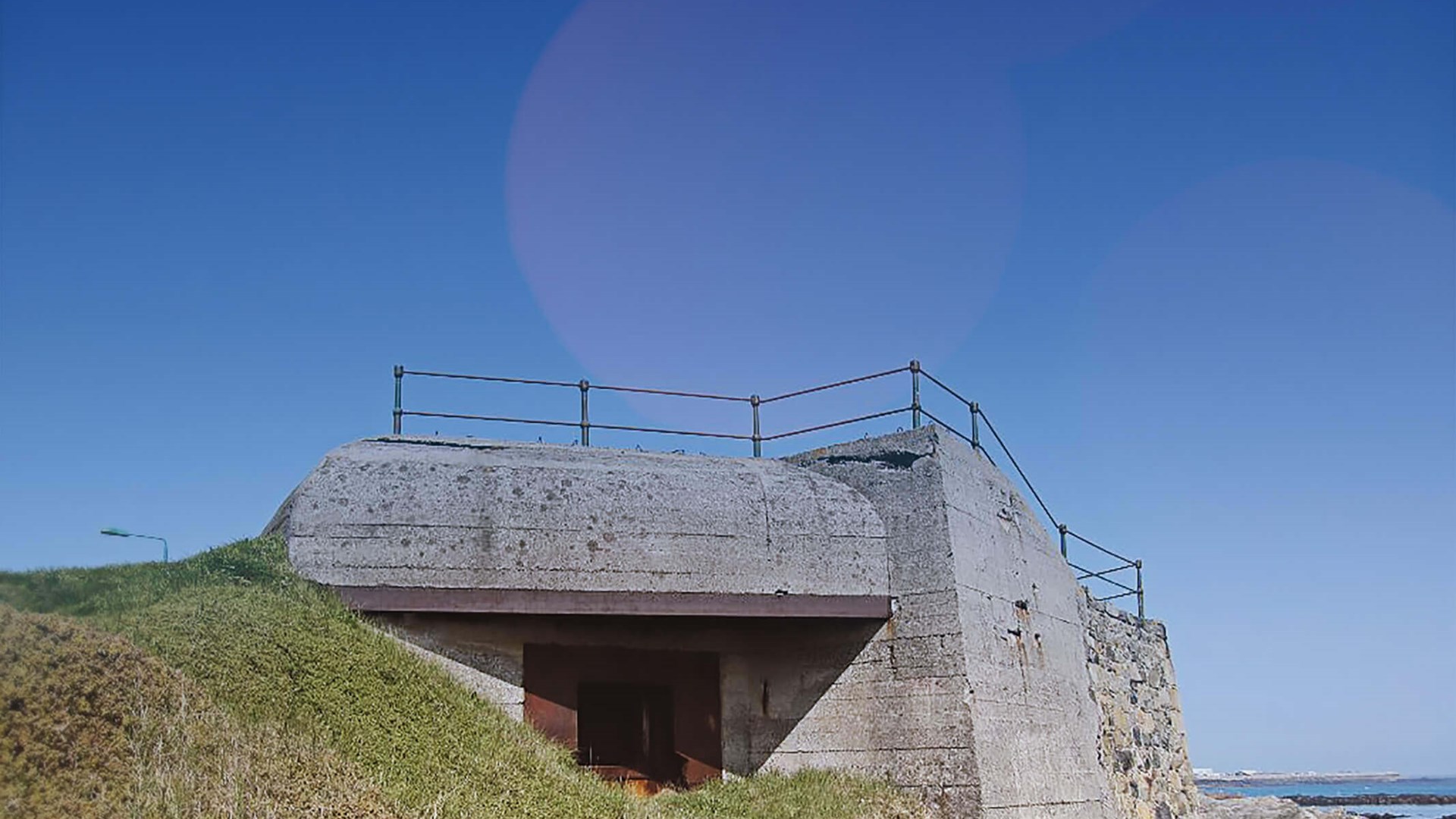
Red 72 Recording Studio Bunker
This two-level bunker, now home to Red 72 Recording Studios, was a design based on a Type 617 telephone switching post and provided the main communications centre for the Artillery, 319 Infantry Division and Fortress Kommandant, whose headquarters were situated in two nearby bunkers.
Torteval Bunker
Situated in Guernsey’s smallest parish, Torteval, this L407 type bunker was used to house the reserve ammunition for the battery. For many years now, this unique fortification has been used as rehearsal space for bands.
Dive Guernsey Bunker
Originally a type L409 bunker for a 3.7cm Flak (a series of Nazi anti-aircraft cannon), this fortification situated at Castle Emplacement was part of ‘Resistance Nest Modelhafen’ and during Nazi Occupation was manned by Luftwaffe troops. Now, the concrete fortification is used by scuba diving centre, Dive Guernsey, offering courses with experienced instructors.
Guernsey Fortifications
Fort Hommet and the Shell Shrine
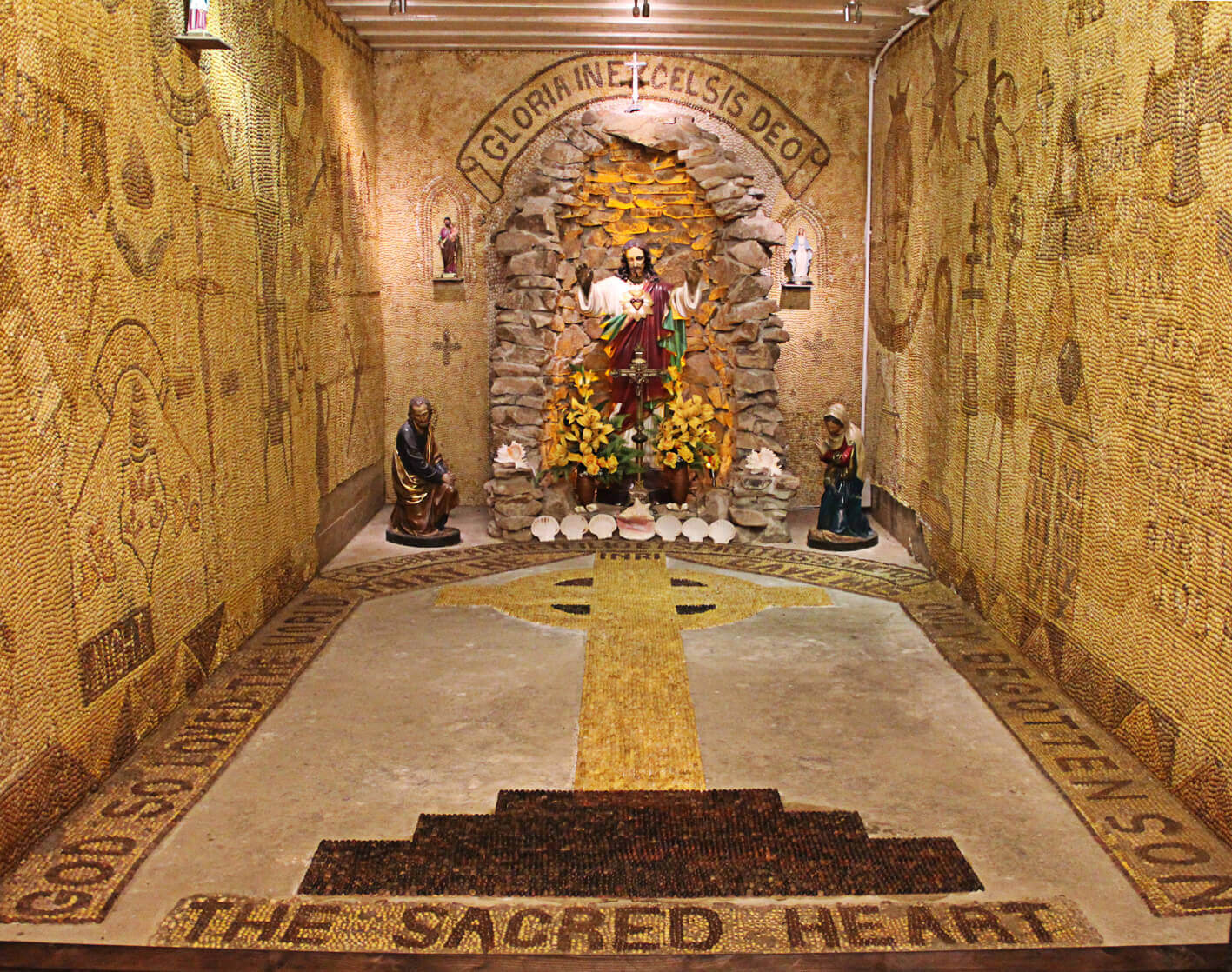
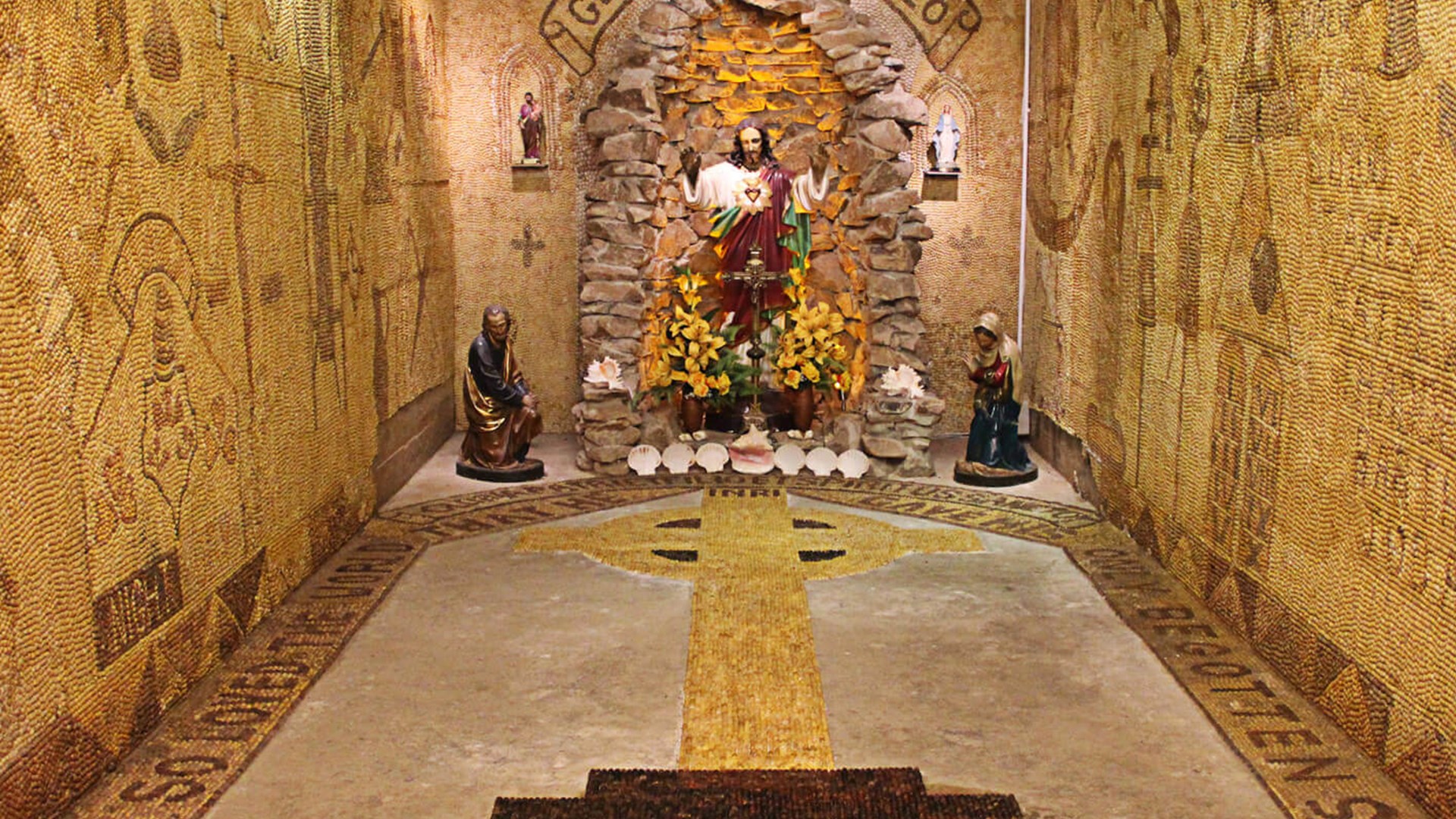
Fort Hommet near Vazon was a heavily fortified headland with 12 German defensive structures. Years after the war, in the 1960’s, Hubert (Bert) Le Galloudec created a shrine within the bunker, decorated entirely with shells from local beaches. His elaborate designs depicted stories of the Bible and Christian symbols. Over the years, the shrine fell into decay from weather damage and vandals, but in 2005, volunteers inspired by Hubert’s work and with support from Guernsey Museums, restored and re-opened it to the public. For those wanting to visit, the shrine is opened by Festung Guernsey on the first Saturday of each month from April – October, 2 – 4pm.
Batterie Dollmann Command Post
This bunker is one of the many German fortifications that spread out over a large proportion of the Pleinmont headland. It has two underground levels with a range finder position above ground and a large concrete square roof to protect it from enemy view. Visitors can find it just off the Rue de La Trigale on Pleinmont Point.
German Naval Headquarters
The Headquarters of the German Naval Commander Channel Islands were originally based at La Porte and La Collinette Hotels however, a decision was later taken to build more permanent bunkers at St Jacques in St Peter Port. The new Signal Headquarters were operative from the 1st February 1944 and dealt with all the radio signals traffic for the German forces on the Islands. The bunker has now been restored and is open to the public.
Guernsey boasts a wealth of history waiting for you to discover. You can book tours of the bunkers through Festung Guernsey, and you may be able to visit bunkers that are not normally open to the public. Book your ferry travel today to learn about the island’s exciting past and explore some of the chilling Guernsey German bunkers.
- Condor Ferries
- New Jetty
- White Rock
- St. Peter Port
- Guernsey
- GY1 2LL
- +44 3456 091 024
